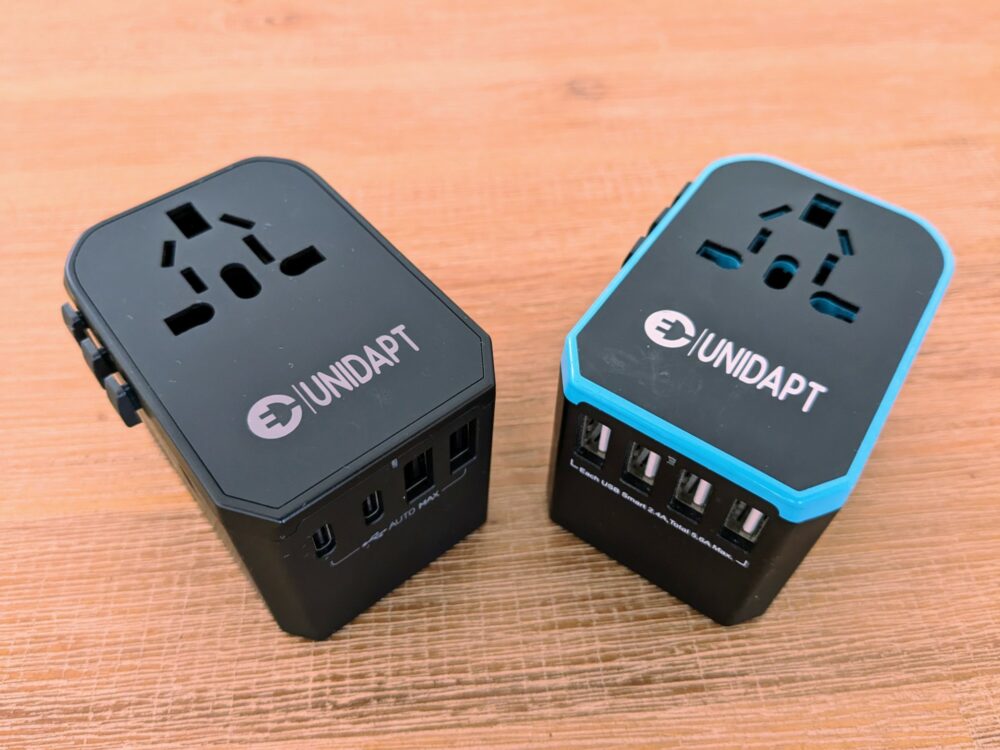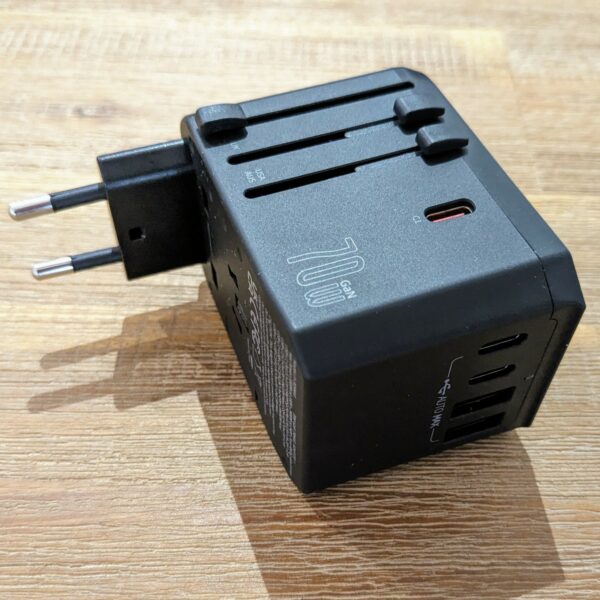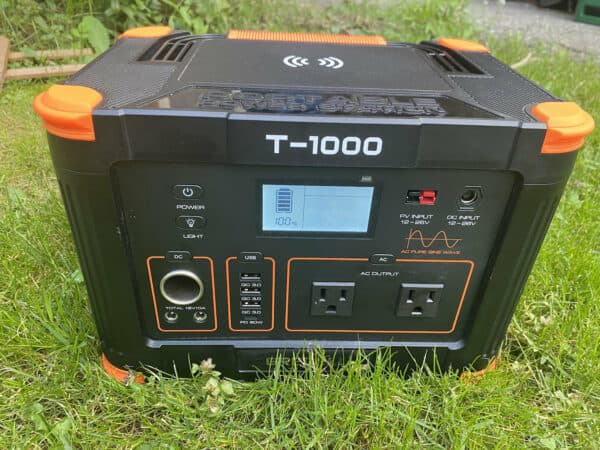Unidapt 70W International Travel Adapter Review: It Does It All
We may earn a commission from purchases you make after clicking links on this site. Learn more.If the name of this site wasn’t enough of a clue, travel adapters are something that’s been near and dear to my heart for a very long time. Good ones, bad ones, absolutely useless ones that blew up in a literal puff of smoke, I’ve tried them all.
Today I’m taking a look at Unidapt’s new 70W universal adapter, the follow-up to a model that was my top pick for most travelers for the last few years.
The previous version did almost everything right, with few of the strange design decisions and unexplained issues that plague much of the competition. It’s lived in my backpack since 2019, and I’ve used it literally all over the world without issue.
The market has changed quite a bit in that time, though, as USB has taken over as the main way of charging everything from phones and laptops to wireless earbuds, smart watches, and even electric toothbrushes.
While there’s still some need for a wall outlet on an adapter like this, to plug in things like curling irons or oddball camera chargers, many travelers can run everything in their bag from a few USB ports. Assuming, that is, that those ports can put out enough power.
No longer do a few basic USB-A sockets cut it. Now it’s all about multiple high-power USB C ports, Power Delivery, PPS. and a bunch of other acronyms and tech jargon that make most spec sheets look more like a word salad than helpful advice.
I guess that’s where I come in.
- Dimensions: 3.0 x 2.2 x 2.1 inches
- Weight: 6.1oz
- Ports: 2x USB C, 3x USB-A
- Max Output: 70W USB C, 15W USB-A
- Countries: 150+
Features and Specifications
In the spirit of not fixing what ain’t broke, the basic look of the adapter hasn’t changed much except the color. It’s now completely black, versus the blue/black combo of the previous model, and looks better for it. I wouldn’t go as far as calling a chunky travel adapter like this sleek, but I like it.
This new version (apparently the official model number is JY-305MAX, and this will be the first and last time I call it that) has a different mix of ports as well. The old one had 1 USB C and 4 USB-A; this one has three USB C and two USB-A.

That feels like a sensible mix in 2024: I don’t remember the last time I traveled with more than two gadgets that had to be charged from a USB-A port.
On my last trip, the only things that fell into that category were my Fitbit charger and a knock-off inductive charger for my toothbrush, and even then, on a three month trip I still never needed to plug them both in at once.
As with many universal adapters, though, there’s apparently some confusion about how many countries it can work in.
The box says 150+, the Amazon listing says “over 200 of the most travelled countries” (are there that many?), and the instruction booklet lists 212 places, but some are double-ups because they use multiple plug types, and others stretch the definition of country a long way. Okinawa, I’m looking at you.
Regardless of any of that, the adapter will fit into the same wall outlets as most other so-called universal models. In layperson’s terms, it has “North American” plugs that can be rotated to also work in China and Australasia, “European” plugs, and “UK” plugs.
It supports nine of the roughly 15 different socket types in use, making it fine for most, but far from all, countries in the world. We’ve got a post that tries to demystify all this stuff if you’re interested!
When it comes to the USB side of things, it’s thankfully a bit simpler. The USB C port on the side maxes out at 70W, which is enough to charge everything from your phone or tablet to almost all travel-sized laptops at full speed.
The other USB C ports and both of the USB-A ports top out at 15W. That’s fine for charging your phone or other small devices (although see my testing results below) but not much more than that.
One thing that thankfully hasn’t changed from the last version is the inclusion of a spare fuse in a little compartment in the back. That’s particularly useful for a travel adapter, since if it trips, I’d suggest the chances of you having another one in your suitcase is fairly slim.
I also comes with a nice little travel case, with a padded lid and mesh body. Other than the lid, there’s not a lot of protection on offer, but it’s certainly better than nothing. It also gives somewhere to safely store the booklet, instead of inevitably losing it after five minutes.
Finally, let’s talk about the power LED. This is something that I have gone on (and on) about in the past: when I’m in a dark hotel room with my travel adapter plugged in beside the bed, I do not need a white light as bright as the sun to tell me it’s working.
Unidapt continues, thank God, to resist that temptation. The light is very small, and on the bottom of the adapter facing downwards. It’s about as subtle as it can get while still existing at all.
Real-World Testing Results
I started testing the same way I do with every travel adapter, with a mess of gadgets and appliances sitting around me on the floor. I’ve amassed things with US, UK, European, and Australasian plugs over the years, so it’s easy to see what fits well into the adapter and what doesn’t.
Loose or overly-tight sockets are a common problem with universal adapters: the former means that heavy chargers fall out, the latter means you’re never quite sure whether you’re going to leave half of the plug inside the adapter when you yank it out.
Even more than the previous model, I was happy with how well everything fitted. Even my stress test of a heavy charger with a Euro-style plug worked as well as I could hope, fitting snugly but not too snugly, and at no risk of dropping onto the floor.

All of the other plug types, including two-prong North American versions that can also be a bit prone to falling out of travel adapters, fit solidly as well.
I’m in Australia right now, which also means I can test an issue common to every universal travel adapter I’ve ever used.
Because the adapters are quite large and the US/AU prongs are typically some distance from the edge, the top of the adapter often presses into the power switch above the socket. In the worst cases, this turns the outlet off and keeps it that way!
Fortunately that’s not the case here: while the adapter does lightly touch the switch, it’s not enough to turn it off. I’d prefer it didn’t do it at all, of course, but it’s better than many, so I’ll give it a pass.
Moving onto the USB side of things, which is likely of more interest to many travelers, let’s start with a table.
The USB C ports are numbered from the top of the adapter, so USB C-1 is the one on the side, while everything else is from left to right across the bottom.
Whipping out my trusty USB tester, I measured the power flowing into three different laptops from the USB C-1 port, and separately or together, a variety of phones, tablets, and small gadgets like wireless earbuds and watches from the others.
All devices started with less than 50% battery capacity, to ensure they’d charge as fast as they could.
Ports In Use
Advertised Max
What I Measured
USB C-1
70W
57.2W
USB C-2 or 3
15W
11.7W
USB C-1 + USB C-2 or 3
45W + 15W
38.6W + 13.3W
USB C 1 + USB-A
45W + 15W
38.6W + 6.2W
USB C-2 or 3 + USB-A
15W total
9W + 2.5W
So those numbers are well and good, but what are they saying? In short, if you want to charge a laptop via USB C, plug it into the port on the side. Pretty much any travel-sized laptop will charge from it at full speed, plus basically all phones and tablets.
All of the other ports share just 15W between them, and as far as I can tell, don’t have Power Delivery (PD) support. They’re still fine for charging a phone or something smaller, and can probably stretch to a tablet, albeit not all that quickly.
There’s enough power available that with a laptop in the first USB C port and a phone in one of the others, both charge at close to full speed. My phones all said “charging rapidly”, and even if it wasn’t the absolute maximum speed, it’s close enough for me.
If you plug multiple devices into the ports on the bottom, though, that shared 15W becomes an issue pretty quickly unless they’re all things like headphones and e-readers that don’t need much power.
In short, despite there being a total of five USB ports of various types on the adapter, don’t expect to use all of them at once without noticing some devices charging slower than usual.

Of course, if you’ve got multiple devices that really need to charge as fast as possible, you can always plug a decent wall charger into the main travel adapter socket as well.
A little 65W charger like the Anker model in the photo takes up almost no room in a bag (I take it on every trip these days), and fast-charges any phone, tablet, or laptop I have with me.
Verdict
All in all, I’m impressed with what Unidapt has done here. All of the things I liked about the previous model have remained, from a useful selection of ports to well-fitting sockets, a spare fuse, and a status LED that doesn’t light up the entire room.
The things that have changed are all for the better, from small things like a nicer color scheme to much more important aspects like now being able to charge a laptop from one of the USB C ports.
It fits well into wall outlets, can handle even heavy chargers without letting them drop onto the floor, and is sensibly priced. The only thing that’s missing is proper, resettable surge protection, although the spare fuse at least goes some way towards dealing with that.
While I’d have liked to see more power on offer from the USB ports on the base of the adapter, there’s just enough there for the number and type of devices I travel with. I can always plug in a little high-power charger into the adapter if I really feel the need.
I’ll be using this new model on my international trips from now on: if anything changes, I’ll update this review, but for now, it’s my new top universal travel adapter pick.









